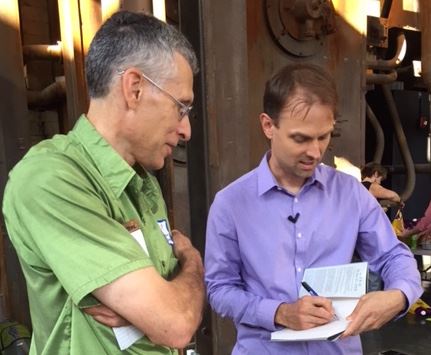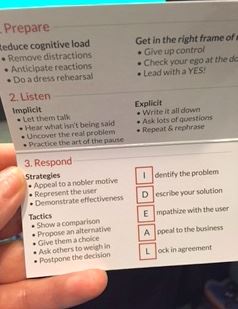With UX being recognized more frequently as important by everyone in the organization, we find ourselves spending more time justifying our designs, and how we approach explaining our work can make or break our success in doing so.
Some of us know this first hand because we've created really great work only for clients to not like them (and sometimes *really* not like them). We blame ourselves for not conveying all the details, or not spending enough time advocating for the user, or not facilitating the right conversation with the right client. Knowing how to lead these conversations is a skill of any good designer.
Tom Greever, author of Articulating Design Decisions (O'Reilly), visited us last week for tacos and a talk on how best to prepare, listen, and respond when it comes to explaining our design solutions for stakeholder buy-in.

Preparation
As with any meeting, preparing for it can help with its overall success. Tom recommended rehearsing and anticipating reactions so we are better equipped to discuss our work thoughtfully and not in a reactive rush. Our own mental preparation is important, too. We need to be prepared that we're not always going to be right and others could be. Your stakeholders may have information about the business you don't have, so check our ego at the door.
Listening
When it comes to listening, it's really about leveraging basic communication skills. We should be allowing others to talk, pausing before we speak, and diagnosing the real issue at hand. Often, a client might suggest something that isn't the right solution. As designers, it's our responsibility to get to the heart of the issue – what problem are they trying to solve and how can we provide a solution serves the needs of the user as well as the business. Listen to the words behind the words. One way to do this is to convert “likes” into “works” to understand the reasoning behind their suggestion. For example, it’s more impactful to hear “this dropdown works because…” instead of “I like this dropdown.".
 Responding
Responding
Tom has an IDEAL way to respond, which includes:
- Identifying the problem
- Describing your solution
- Empathizing with the user
- Appealing to the business
- Locking in the agreement
Once you've identified the problem and have found common ground, it's imperative to lock in the agreement, because without it, we can't move forward. Tom offered a few examples we can use for responses based on his previous experiences. His book also has plenty of great examples that illustrate how to use the IDEAL method in realistic scenarios.
If you joined us for this event, we'd love to know how you've used some of Tom's methods when it comes to discussing your design work. If you weren't able to join us, we hope you can make another one of our events soon!
Author: Michelle Chin